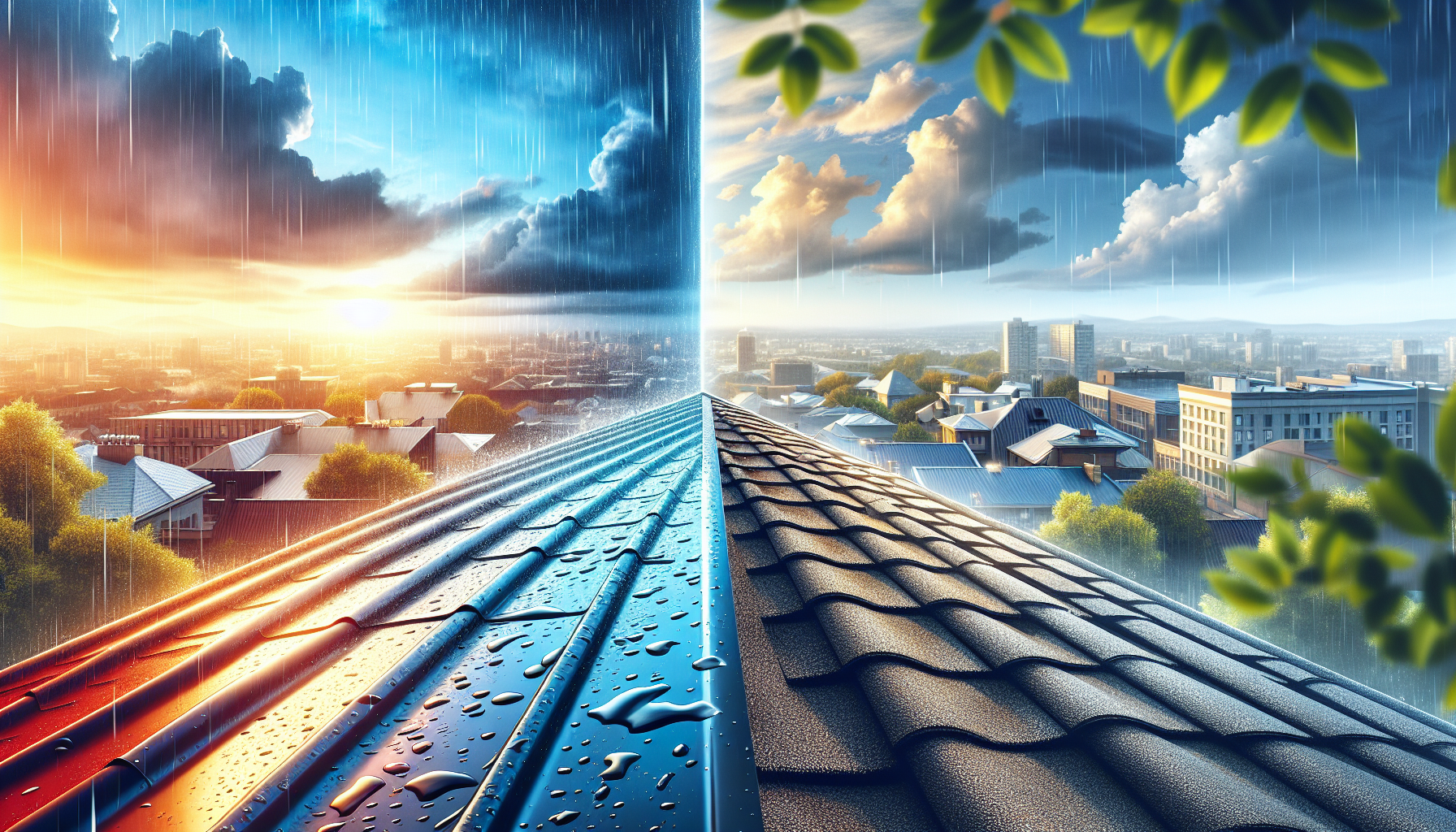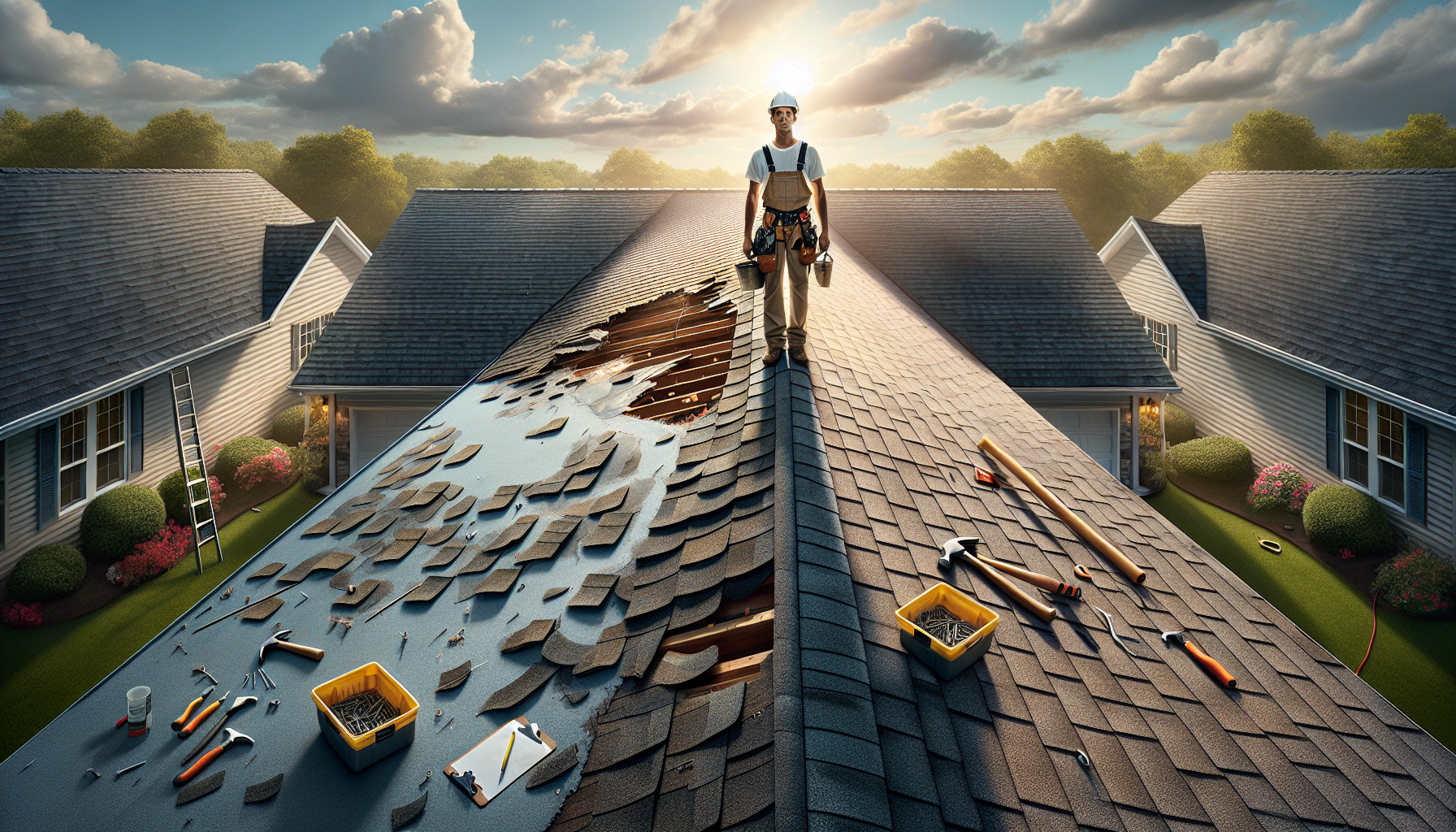Eliminating Black Streaks: A Guide to Tackling Black Algae Streaks on Your Roof
Photo by xandernikola79 on Pixabay
Understanding black streaks on roofs
As a homeowner in Gahanna, Ohio, you’ve likely noticed unsightly black streaks marring the appearance of your roof. These dark, vertical lines are not only an eyesore but can also indicate a more serious underlying issue: the presence of black algae. In this comprehensive guide, we’ll explore the causes, effects, and solutions for eliminating these pesky streaks, ensuring your roof remains in pristine condition.
Black streaks on roofs are caused by a type of algae known as Gloeocapsa magma, which thrives in warm, humid environments. This algae feeds on the limestone and other minerals found in asphalt shingles, leading to the formation of dark streaks that can spread across the entire roof surface if left unchecked.
While black streaks may seem like a mere cosmetic issue, they can actually have detrimental effects on the longevity and performance of your roof. The algae can cause shingles to deteriorate prematurely, leading to leaks, water damage, and potential structural issues. Additionally, the dark streaks can absorb more heat from the sun, causing your home’s interior to become warmer and increasing your energy costs.
The dangers of leaving black streaks untreated
Ignoring black streaks on your roof can have severe consequences, both for the integrity of your roof and the overall value of your home. Here are some of the dangers associated with leaving black streaks untreated:
- Accelerated shingle deterioration: The algae feed on the limestone and other minerals in asphalt shingles, causing them to break down faster than normal. This can lead to premature shingle failure, leaks, and costly roof replacements.
- Water damage: As shingles deteriorate, they become more susceptible to water infiltration, potentially causing damage to your home’s interior, insulation, and framing.
- Reduced energy efficiency: The dark streaks absorb more heat from the sun, causing your home’s interior to become warmer and increasing your energy costs for air conditioning.
- Decreased curb appeal: Black streaks can significantly diminish the aesthetic appeal of your home, potentially lowering its resale value.
- Roof warranty issues: Many roof manufacturers require homeowners to maintain their roofs in good condition, and failing to address black streaks can void your warranty.
To avoid these potential risks, it’s essential to take proactive measures to prevent and eliminate black streaks on your roof.
Prevention methods for black streaks on roofs
While black streaks can be challenging to remove once they’ve taken hold, preventing their formation in the first place is the most effective approach. Here are some prevention methods to consider:
- Choose the right shingles: Look for shingles that are specifically designed to resist algae growth. These shingles often contain copper or zinc granules that inhibit algae formation.
- Proper roof ventilation: Ensuring adequate ventilation in your attic can help reduce the warm, humid conditions that algae thrive in.
- Trim overhanging branches: Overhanging tree branches can provide shade and moisture, creating an ideal environment for algae growth. Regularly trimming these branches can help discourage algae formation.
- Install zinc or copper strips: Installing strips of zinc or copper along the roof’s ridge can help prevent algae growth as the materials slowly release ions that inhibit algae formation.
- Regular roof cleaning: Scheduling regular professional roof cleaning can help remove any algae spores or debris before they have a chance to take hold and form streaks.
DIY solutions for removing black algae streaks
If black streaks have already formed on your roof, there are several DIY solutions you can try to remove them. However, it’s important to exercise caution when working on your roof and follow all safety precautions.
- Chlorine bleach solution: Mix one part chlorine bleach with three parts water in a garden sprayer. Spray the solution onto the affected areas and let it sit for 15-20 minutes before rinsing with a garden hose. Be cautious, as bleach can damage landscaping and discolor shingles.
- Trisodium phosphate (TSP) solution: Mix one cup of TSP with one gallon of warm water and apply it to the black streaks using a soft-bristle brush or a low-pressure sprayer. Let the solution sit for 15-20 minutes before rinsing.
- Oxygen-based cleaners: There are several oxygen-based cleaners available on the market specifically designed for removing black streaks from roofs. Follow the manufacturer’s instructions carefully for best results.
- Power washing: While power washing can be effective for removing black streaks, it’s important to use the correct pressure and technique to avoid damaging your shingles. It’s generally recommended to hire a professional for this method.
Remember, when attempting any DIY roof cleaning solution, always take necessary safety precautions, such as wearing protective gear, using proper ladder techniques, and avoiding working on wet or slippery surfaces.
Professional roof cleaning services for tackling black streaks
While DIY solutions can be effective for minor black streak issues, hiring a professional roof cleaning service is often the best approach for more severe or widespread cases. Professional roof cleaners have the expertise, equipment, and specialized solutions to safely and effectively remove black streaks without damaging your roof.
When choosing a professional roof cleaning service in Gahanna, Ohio, look for companies with experience, positive reviews, and proper licensing and insurance. Reputable companies will also offer a warranty on their work and use eco-friendly, low-pressure cleaning methods to protect your roof and landscaping.
Get A Free Estimate From Roof Revivers Today
Maintaining a clean and streak-free roof
Once you’ve successfully eliminated black streaks from your roof, it’s essential to implement preventive measures to keep them from returning. Regular maintenance and inspections can help ensure your roof remains in top condition and free from unsightly streaks.
- Trim overhanging branches: Regularly trimming any overhanging tree branches can help reduce moisture and shade, discouraging algae growth.
- Clear debris: Remove any leaves, twigs, or other debris that accumulates on your roof, as these can provide a breeding ground for algae.
- Inspect for leaks: Leaks can create damp conditions that are ideal for algae growth. Promptly repair any leaks or damaged areas to prevent future streaking.
- Consider roof treatments: There are various roof treatments available, such as zinc or copper strips, that can help prevent algae growth and streaking.
The importance of regular roof inspections
In addition to maintaining a clean and streak-free roof, it’s crucial to schedule regular roof inspections. These inspections can help identify potential issues, such as loose or damaged shingles, before they escalate into more significant problems.
Professional roof inspectors can also assess the condition of your roof and recommend appropriate maintenance or repairs to extend its lifespan. By catching issues early, you can avoid costly repairs or premature roof replacements down the line.
Frequently asked questions about black streaks on roofs
- Are black streaks on roofs harmful? While black streaks may seem like a cosmetic issue, they can lead to accelerated shingle deterioration, water damage, and reduced energy efficiency if left untreated.
- Can black streaks be prevented? Yes, there are several preventive measures you can take, such as choosing algae-resistant shingles, ensuring proper roof ventilation, trimming overhanging branches, and installing zinc or copper strips.
- How often should I have my roof cleaned? The frequency of roof cleaning depends on various factors, such as the severity of streaking, local climate, and the presence of overhanging trees. As a general guideline, it’s recommended to have your roof cleaned every 2-3 years or as needed.
- Is it safe to clean my roof myself? While there are DIY solutions for removing black streaks, working on a roof can be dangerous if proper safety precautions are not followed. It’s often safer and more effective to hire a professional roof cleaning service.
Conclusion: Protecting your roof from black algae streaks
Black streaks on roofs may seem like a minor aesthetic issue, but ignoring them can lead to costly repairs and premature roof replacements. By understanding the causes and taking proactive measures to prevent and eliminate these streaks, you can protect your investment and maintain the curb appeal of your home in Gahanna, Ohio.
Whether you choose to tackle the problem with DIY solutions or enlist the help of a professional roofer, addressing black streaks promptly is essential for preserving the longevity and performance of your roof. Remember, a well-maintained and streak-free roof not only enhances your home’s appearance but also safeguards its structural integrity and energy efficiency.
By following the guidance in this comprehensive guide, you can bid farewell to unsightly black streaks and enjoy a beautiful, pristine roof for years to come.



